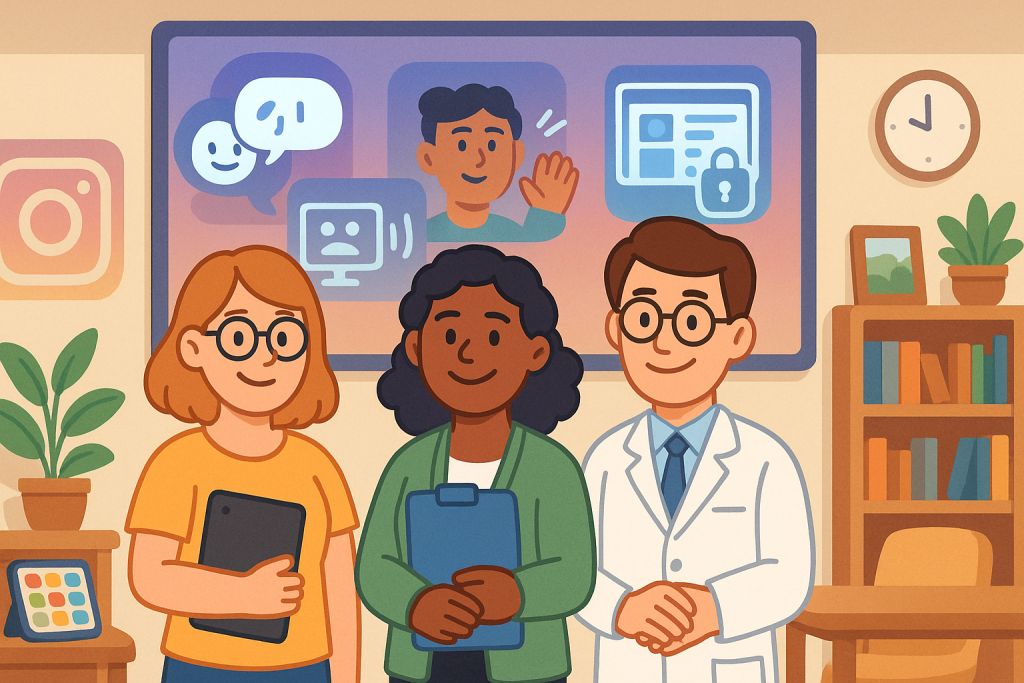
Artificial intelligence (AI) is dominating social media platforms like Instagram, where rapid-fire reels, demos, and viral posts showcase exciting new AI-powered tools and breakthroughs daily. For therapists—speech-language pathologists (SLPs), occupational therapists (OTs), and psychologists—these trends offer a glimpse into the future of clinical practice. But with the constant flood of AI hype, how do you separate fleeting fads from game-changing innovations? More importantly, how can you leverage these latest AI trends to enhance your therapeutic impact ethically and effectively?
This article unpacks the most viral AI updates currently buzzing on Instagram, translating them into practical insights for therapy professionals.
1. AI-Powered Video and Movement Analysis: Next-Level Remote Assessment
One of the most exciting AI trends gaining traction on Instagram is real-time video analysis tools that track facial expressions, speech articulation, and fine motor movements. These tools use machine learning to provide detailed, objective data on client performance, even from recorded or live video sessions.
For SLPs and OTs, this means more precise assessment and progress monitoring without needing in-person observation every time. Imagine AI algorithms flagging subtle changes in a client’s articulation or motor coordination patterns that might otherwise go unnoticed.
While these platforms are still emerging and need clinical validation, they represent a promising adjunct for teletherapy and hybrid models—especially valuable given the increase in remote service delivery post-pandemic.
2. Chatbots and Virtual Assistants That Understand Emotion and Context
Instagram reels are buzzing with AI chatbots demonstrating near-human conversational flow and emotional sensitivity. Advanced natural language processing (NLP) models now recognize not just words but the tone and emotional intent behind them.
For psychologists and SLPs working on social skills, motivation, or emotional regulation, these AI-driven conversational agents can serve as engaging, low-stakes practice partners outside sessions. They offer clients opportunities to rehearse challenging conversations or receive immediate, non-judgmental feedback on communication attempts.
However, it’s critical to view these tools as supplementary aids rather than replacements for human connection and clinical judgment.
3. Creative Content Generation: Saving Time, Boosting Engagement
Social media trends highlight AI tools that instantly generate text, visuals, and even audio content tailored to user needs. Therapists can harness this to create culturally adapted stories, visual schedules, relaxation scripts, or interactive worksheets in minutes.
For example, AI can transform a generic narrative retell task into a culturally relevant story for diverse client populations or produce calming mindfulness scripts aligned with a client’s language and spiritual background.
By automating these time-consuming tasks, therapists free up more time to focus on individualized clinical work and relationship building.
4. Ethical Considerations: What Social Media Often Misses
While Instagram showcases the shiny potential of AI, it rarely highlights the ethical complexities. Many trending AI tools operate with limited transparency on data privacy, algorithmic bias, and inclusivity.
Therapists must critically evaluate new AI products by asking:
- How is client data protected and stored?
- Was the AI trained on diverse populations to avoid bias?
- Does it uphold client autonomy and consent?
Navigating these concerns ensures AI enhances care without inadvertently perpetuating inequities or privacy violations.
5. Staying Updated Without Overwhelm: Curate Your AI Learning
With AI news flooding social media daily, it’s easy to feel overwhelmed or distracted by hype. To stay informed and clinically relevant:
- Follow trusted AI experts who translate tech jargon into therapy insights
- Join professional groups or forums focused on AI in healthcare
- Schedule regular “AI update” times instead of constant scrolling
- Experiment cautiously with new tools in non-critical ways before full clinical adoption
This intentional approach helps therapists keep pace with AI innovation without burnout or misinformation.
Conlusion
Instagram’s fast-moving AI trends reveal a dynamic future where therapy and technology increasingly intersect. By understanding and critically engaging with these viral updates, SLPs, OTs, and psychologists can adopt AI tools that truly enhance client care—balancing innovation with ethics and empathy.
As AI evolves, therapists who blend technical curiosity with clinical wisdom will be best positioned to harness its full potential for meaningful, inclusive, and effective therapy.
